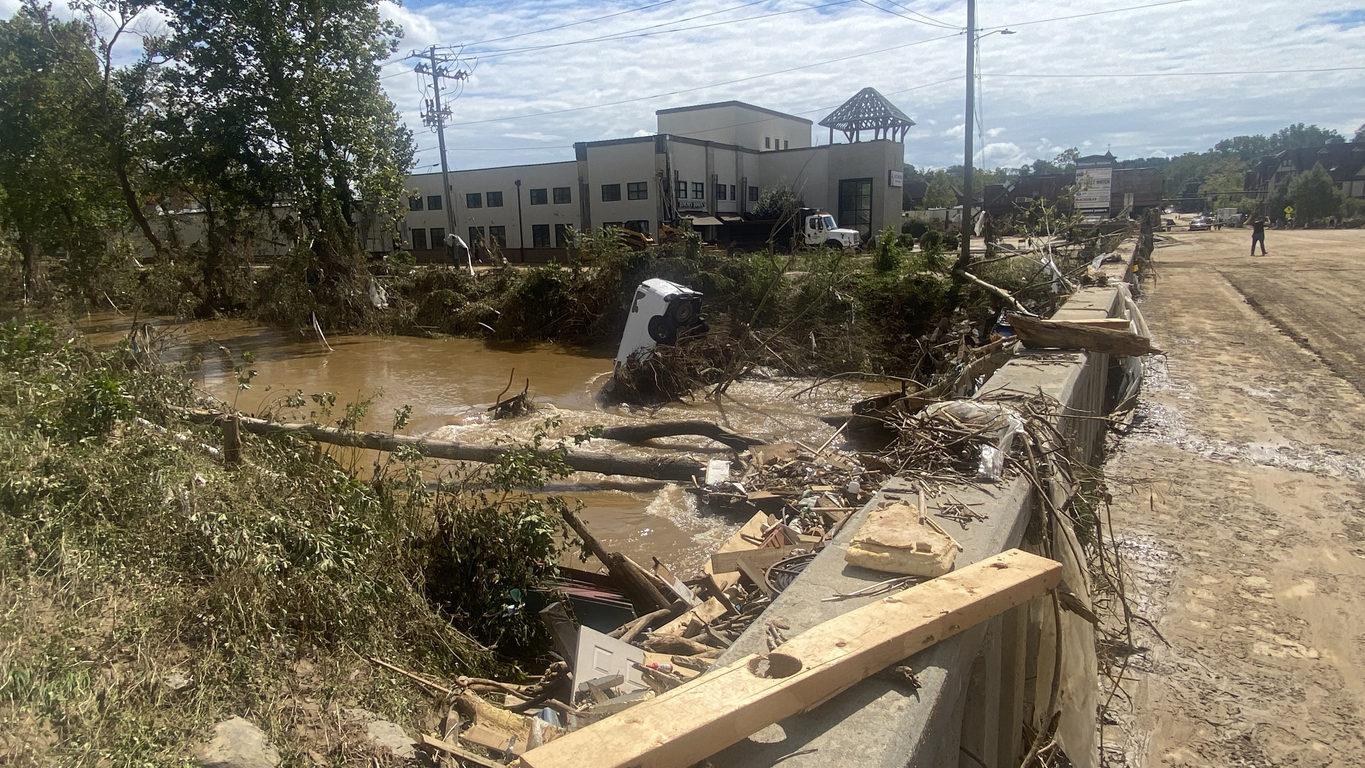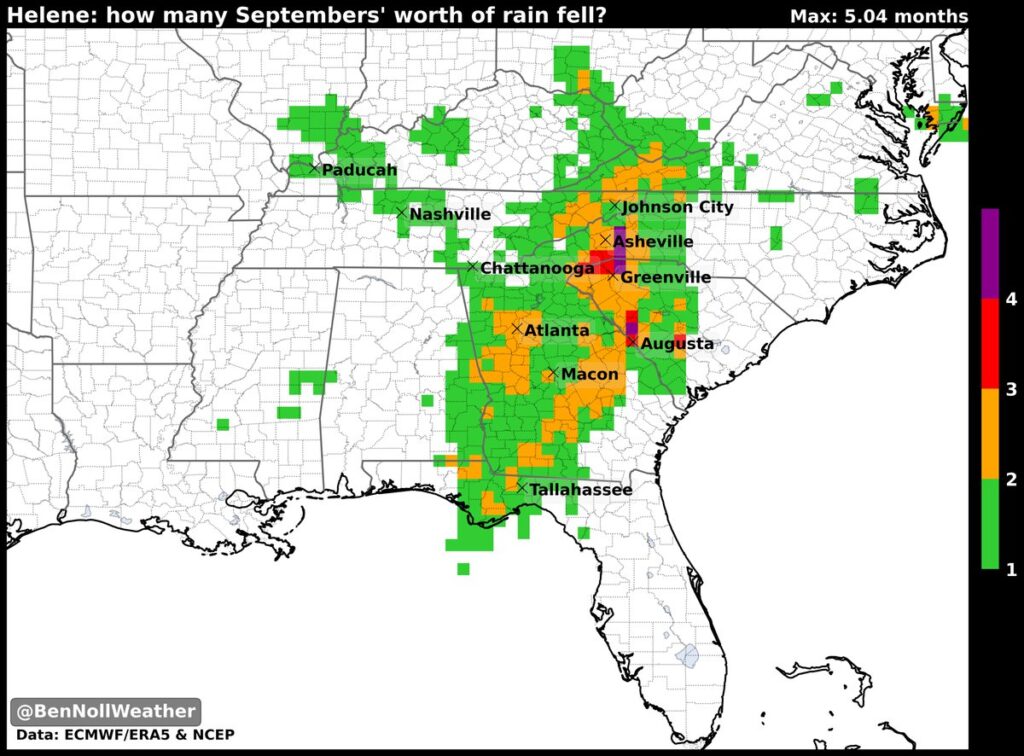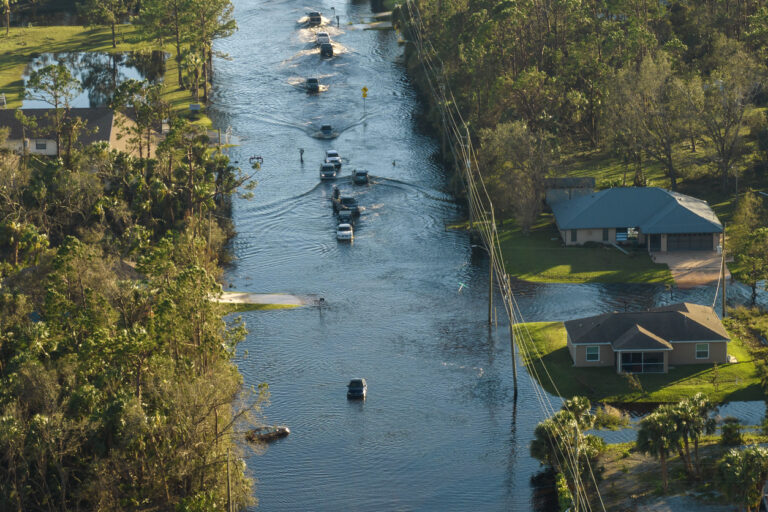Climate Haven to Catastrophe: The Devastation of Hurricane Helene
Mike Colagrossi

Asheville, among many other cities throughout America, has been touted as a climate haven – a city safe from the more immediate threats of the global climate crisis.
It’s not a coastal city that has to contend with rising sea levels, nor is it a city on the edge of arid wildfire-prone lands. But Hurricane Helene’s catastrophic path ravaged deep into this North Carolina city all the same.
Climate Havens, Few and Far in Between
Hurricane Helene made landfall in Florida as a Category 4 Hurricane, then surged inland as a tropical storm the next day, making its way inland to Asheville, North Carolina.
High-elevation, more than 2,000 ft above sea level and 300 miles away from the nearest coastline, and the area still wasn’t safe from the floods. With an estimated 100 or more lives lost in North Carolina alone, the damage seen in Asheville was unprecedented.
Devastating before and after pictures from USA Today show the level of destruction left in the wake of Hurricane Helene.
- Some parts of western North Carolina received four to five months’ worth of rainfall in under three days.
- A recent First Street report found that areas of North Carolina hit hard by Helene could now face once-in-100-year floods as often as every 11 to 25 years.

“If you live in a place that can rain, you live in a place that can flood,” said Kathie Dello, North Carolina’s state climatologist.
The region has faced destructive floods before, with similarly catastrophic flooding in 1916 and 1940. Hurricane Ivan triggered widespread flooding and landslides in 2004, while Tropical Storm Fred devastated Canton, North Carolina, in 2021.
“A lot of us had been waiting for this for 30 years,” said Brad Johnson, a geologist and landslide expert at Davidson College in North Carolina. “I think we’ve all been living in fear of this.”
Inland areas are increasingly at risk of severe flooding as global warming drives heavier rainfall.
Climate’s View: Numerous ongoing studies and climate observations link the increasing intensity of storms directly to a warming planet.
A 2020 study in the Journal Nature found that Hurricanes now keep their intensity as they move inland. Researchers stated “Whereas in the late 1960s a typical hurricane lost about 75 percent of its intensity in the first day past landfall, now the corresponding decay is only about 50 percent.”
“People associate hurricane risks with coastal areas,” said Frances Davenport, a professor of civil and environmental engineering at Colorado State University. “But they represent a really large amount of inland coastal flooding in the United States.”
The National Hurricane Center found that over half of the hurricane-related deaths between 2013 and 2022 were due to freshwater flooding from rainfall, rather than coastal storm surges.
Increased Rainfall in a Warming World
Climate scientist, David Easterling, experienced the devastation of Hurricane Helene firsthand. Asheville is also home to climate researchers who work at the National Centers for Environmental Information.
Easterling and his team have published some compelling studies on how rainfall intensity will increase in a hotter climate.
Speaking to NPR, Easterling said “A lot of people don’t want to hear about global warming and climate change and all that, but this is just a classic sort of event that we, sadly, probably expect to see more of in the future.”
Easterling and his team’s analysis suggests that North Carolina likely experienced a 1-in-1,000-year rainfall event—an event with a 0.1% chance of occurring annually.
However, as rainfall forecasts update, we may need to recalibrate how we predict our once in a hundred or once in a thousand events if they keep happening more frequently.
Economic Loss from Hurricane Helene
AccuWeather estimates that the economic fallout of Hurricane Helene could be between $145 billion and $160 billion. With more hurricanes on the way through the rest of the season, this number could grow more.
Real Estate View: Even as these life threatening and economic disasters continue to pile up, many Americans are still moving to risky areas like Asheville’s Buncombe County. An analysis by Redfin showed that thousands of new residents moved to flood and fire prone counties, as safer counties lost residents.
A recent Zillow partnership with climate risk company First Street, now shows climate risks associated with a home on their app. While climate risk is a growing consideration for new homebuyers, it also clashes with a push to find more affordable housing regardless of the potential risks.



